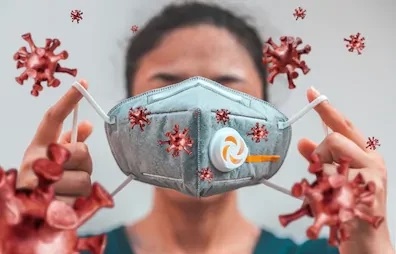
The discipline from all parties in implementing health protocols established by the government is a crucial factor for breaking the transmission chain.
Professor of Statistics Universitas Gadjah Mada (UGM), Prof. Dedi Rosadi, conveyed this statement in the latest release on Tuesday (2/6). Dedi made probabilistic modeling based on real data or probabilistic data-driven models (PDDM) along with other experts namely FMIPA UGM alumnus Heribertus Joko and PPRA Lemhanas Fidelis I Diponegoro alumnus,
Based on the latest tracking data until May 28, 2020, there was a surge in the estimated positive cases at number 31 thousand to 48 thousand at the end of the pandemic. According to Dedi, from observations with the stochastic model, the national transmission rate of R0t (reproduction number / Covid-t t-time transmission rate) which had already dropped to 1,114 on May 11, 2020, showed an upward trend in the second week of May 2020 and reached its peak on May 23, 2020. However, it proceeded to show a downward trend, and on May 30, 2020, in the record time at 1,107.
He explained that some important notes need to be of common concern related to New Normal discourse at this time. One of them is the Indonesian (national) R0t Covid-19 calculation figure in the last few days is still around 1.1. This number shows that if the community is not successful in implementing the health protocol in a disciplined manner
conditions can not be said to be completely safe against the possibility of local transmission.
“But it must be understood that conditions in each region vary in the amount of the price of reproductive figures. Following the BNPB database dated May 31, 2020, there are 104 districts/cities that are areas with green zones so that the area is relatively safe to carry out new normal conditions according to the applicable protocol,” he explained in the release.
Next, adhering to the health protocol in question is no different from that delivered by the government. Mainly using a mask when leaving the house, diligently washing hands using soap, unsterilized hands are prohibited from touching parts of the face that could potentially be the entrance to the virus, and pay attention to recommended distancing and avoiding crowds.
Then, close supervision and control of the mobility of both domestic residents.
Those parties are potentially abroad suspected of causing virus transmission. For example, post-Eid backflow practical efforts still need to be considered to control local distribution. The method is through tracking and quarantine of people at risk (PDP and ODP) and measured rapid testing. Still, it is quite massive against the potential for transmission of asymptomatic people (OTG), especially for areas of the red zone.
In the previous PDDM modeling estimates (25/4), the pandemic in Indonesia would subside in July was still quite relevant. The estimated maximum value of patients around 48 thousand is predicted under the assumption of adding positive patient data in the third week of May as the highest number. The increased PCR test capacity demonstrated in the past two weeks gives good hope for the speed of handling this outbreak.
Dedi said that the emergence of a new epicenter in East Java was the most significant cause of a surge in positive patients. The success of handling Covid-19 in East Java is a common hope for this pandemic not to worry more.
“Likewise, the control of other potentially dangerous provinces such as South Sumatra, South Sulawesi, South Kalimantan, and Papua needs to be optimized so that Indonesia can be more optimistic looking ahead,” he said.
Author: Ika
photo: Shutterstock.com
Translator: Natasa A

